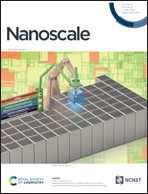Advances in functional organic material-based interfacial engineering on metal anodes for rechargeable secondary batteries†
Abstract
Metal anodes with the merits of high theoretical capacity and low electrochemical potential are promising candidates for the construction of high-energy-density rechargeable secondary batteries. However, metal anodes with high chemical reactivity are likely to react with traditional liquid electrolytes, leading to the growth of dendrites, side reactions, and even safety issues. In this case, metal plating/stripping electrochemistry is associated with an enhanced ion transfer rate and homogeneous ion distribution on the metal surface. Herein, functional organic material (FOM)-based interfacial engineering on metal anodes is systematically presented, focusing on the effects of forming uniform solid electrolyte interphase (SEI) layer, homogenizing ion flux, accelerating ion transport, etc. This main content addresses the advances of FOMs in terms of SEI modification, 3D skeleton construction, and gel/solid-state electrolytes in multiple metal batteries, providing in-depth insights into the exploration of high-performance metal batteries. Moreover, other applications and outlooks for FOMs are further summarized, paying potential ways for the practical applications of FOM-based rechargeable secondary batteries.

- This article is part of the themed collections: Celebrating 25 years of the Key Laboratory for Special Functional Materials at Henan University and Recent Review Articles


 Please wait while we load your content...
Please wait while we load your content...